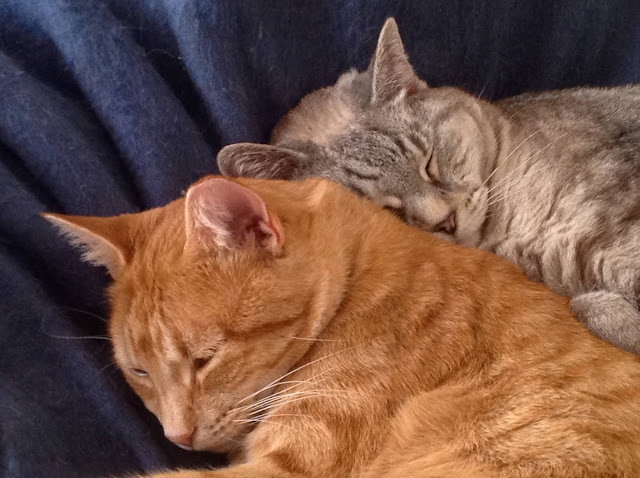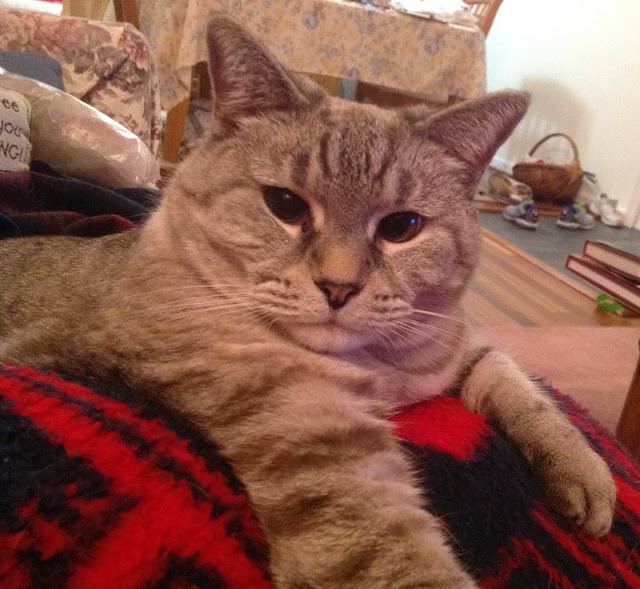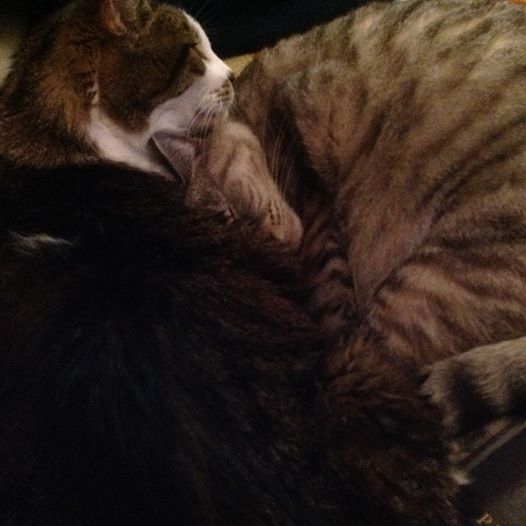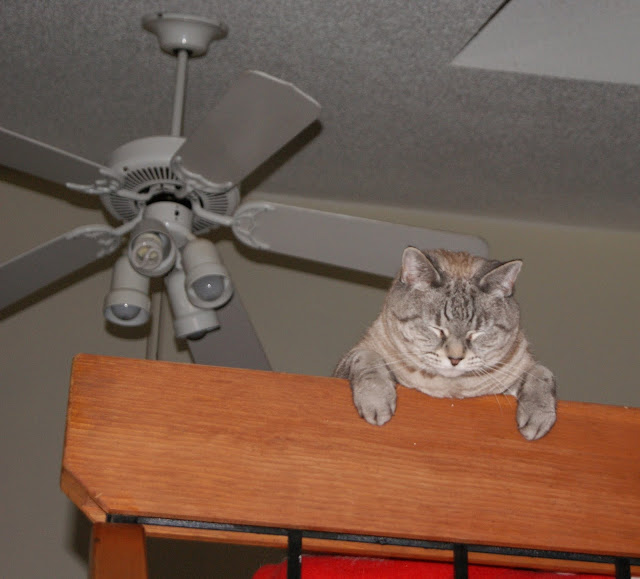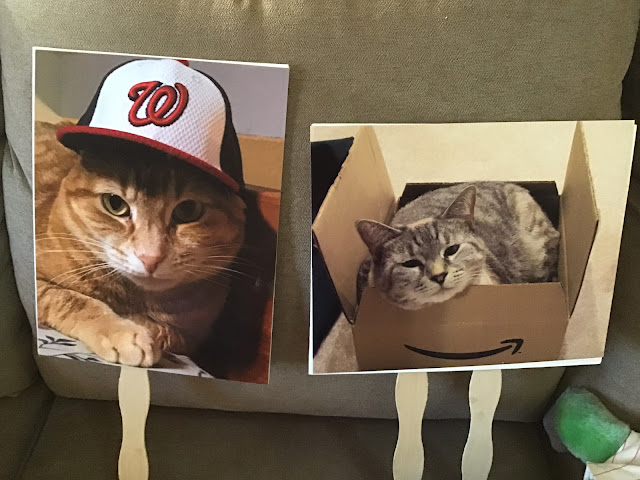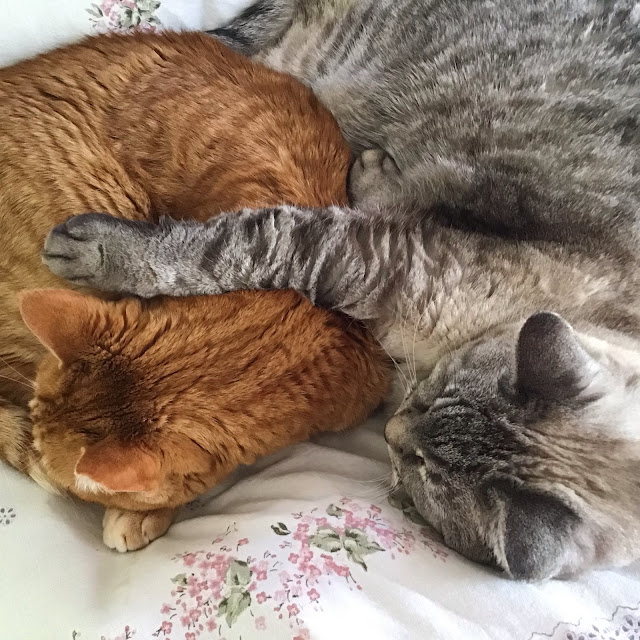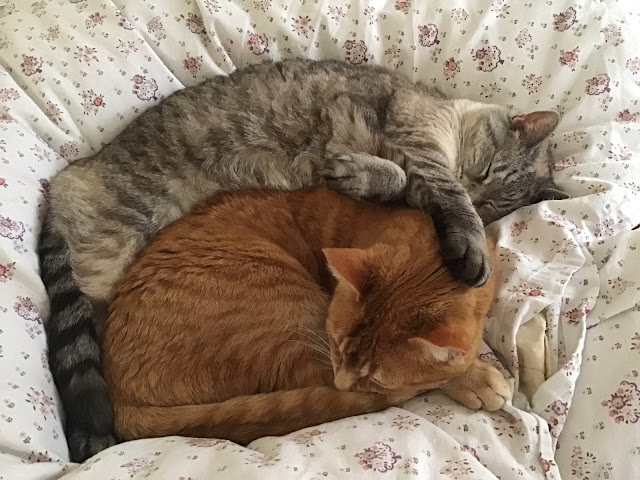Princess Theodora of Greece came to the attention of the international media in March 1928, when the New York Times and other newspapers reported that the 22-year-old princess was going to become engaged to Prince Gustaf Adolf of Sweden, the eldest son of Crown Prince Gustaf Adolf and his first wife, the British-born Princess Margaret of Connaught. The Crown Prince’s second wife, Louise, was Theodora’s aunt. Despite the family connections, the proposed engagement was nothing more than a mere rumor.
Theodora was the second of five children of Prince Andrew of Greece and Princess Alice of Battenberg. She was born May 30, 1906, at Tatoi. Andrew was not present for the birth, as he was in Madrid to attend the wedding of Alice’s cousin, Princess Ena of Battenberg, to King Alfonso XIII of Spain. He did not return to Greece until two weeks after his daughter’s birth.
The little Princess, who was baptized according to the rites of the Greek Orthodox church, was given the nickname, Dolla, by her older sister, Margarita, who was born in April 1905. Margarita called her sister “dear Dolla,” as she could not pronounce Theodora.
From an early age, Theodora and her sisters (Cecilie and Sophie were born in 1911 and 1914, respectively) were taught Greek and English, and their closest playmates were their first cousins, Olga, Elizabeth, and Marina, the daughters of Prince Nicholas of Greece and his wife, the former Grand Duchess Helen of Russia. There were also visits to relatives in Germany, Russia, and England. King George V was Prince Andrew’s first cousin.
In 1917, Prince Andrew’s nephew, King Constantine I was in a difficult and perilous political situation. Greece had lost a “potential ally” when Russia fell into the abyss of revolution that would lead not only to the abdication of Nicholas II, but also to his murder, and the murders of numerous memoirs of his family, including Princess Alice’s aunt, Ella.
Constantine was forced to abdicate, and he and his family went into exile. Prince Andrew and his brother, Nicholas, had hoped that they would be able to remain in Athens to support Constantine’s second son, Alexander, who was now the puppet king of a regime that sought to end the monarchy. Andrew and Alice’s first exile began in St. Moritz, but they settled into the Grand Hotel in Lake Lucerne, which was the “base in exile” for most members of the Greek Royal family.
The Greek royal family’s first exile ended in late 1920, following the death of King Alexander. By the end of 1920, King Constantine I was restored to the throne, and members of the royal family returned to Greece. Princess Alice was pregnant with her fifth child, and in June 1921, she gave birth to a son, Philip.
Alice’s mother, Victoria, Marchioness of Milford Haven, described her eldest granddaughters, as “quite natural & unaffected girls, really children, that do Alice credit, but though nice looking, they have merely the good looks of youth.” All four of the princesses were bridesmaids when their uncle Dickie (Lord Louis Mountbatten) married the heiress, Edwina Ashley. Theodora and her sisters were “dressed in delphinium blue to match Edwina’s eyes.”
Despite Constantine’s restoration, the Greek monarchy was anything but stable. The country suffered defeats in a war with Turkey. The king was unfairly blamed for the war, even though he had nothing whatsoever to do with starting the war with Turkey. With every soldier returning in defeat from Asia Minor, Constantine’s “popularity went into sharp decline.” Prince Andrew also suffered from criticism as he had remained on leave and “absent from his command in Epirus.” His wife and family had remained in Corfu, where they learned that King Constantine had abdicated, and Crown Prince George accepted the crown.
It was first believed that Andrew and his brother Nicholas would leave Greece with the king and queen and their children, but Andrew remained in Corfu as he and Alice were assured by the new government “that they would be out of danger. Instead, Prince Andrew was taken into custody and quizzed about his role in the “Asia Minor debacle.” He was tried, and found guilty of disobedience and abandoning his post in the face of the enemy.” He was sentenced to “perpetual banishment” from Greece.
A British warship brought Andrew and his family out of Greece, and again into exile. It has largely been assumed that Alice’s cousin, King George V, made the arrangements; when, in fact, it was the former Greek prime minister, Eleutherios Venizelos, who provided the impetus to get Andrew out of Greece. Alice had hoped that she and her family could settle in Britain, to be near her mother, but the British sovereign did not want to encourage members of the Greek royal family to reside in England.
A new residence was found in St. Cloud, on the outskirts. Finances were difficult, but Princess Marie – the wife of Prince George of Greece – an immensely wealthy woman in her own right, paid all of the family’s bills. According to her son, Prince Peter, Marie would never have allowed the family to become destitute.
This exile provided further strain for Alice and Andrew’s marriage. Alice, too, began to suffer from a mental breakdown and was eventually hospitalized.
One of Alice’s primary concerns was to find husbands for her two eldest daughters. In the 1920s, Margarita and Theodora spent a lot of time in London with their grandmother, Victoria. They spent a lot of time with their Aunt Louise, who was enlisted to help find husbands for the princesses. Aunt Edwina gave the princesses her used clothes. The two princesses were often mentioned in the social pages, having attended balls and parties at the most important houses in London. Neither emerged with a marriage proposal at the end of the season. Margarita and Theodora were not considered good catches due to their impecunious state as exiled Greek Princesses.
(It was Louise who ended up with a husband. In 1923, she married the future King Gustav VI Adolf of Sweden. It was the second marriage for Gustav Adolf, whose first wife, Margaret, had died three years earlier. All four of Alice’s daughters were bridesmaids at the wedding which took place at the Chapel Royal, St James’s Palace. Before the first world war, Louise had received a proposal of marriage from King Manoel II of Portugal. She turned him down, telling Dolla that she would never marry “a king or a widower.”
When her relationship with Gustaf Adolf, a widower, who would succeed to the Swedish throne in 1950, started to become serious, Louise begged Theodora and Margarita to not leave her alone with Gustaf. “Naturally, we did the opposite, and Uncle Gustaf was extremely grateful to us for doing so. I can remember exactly what he said to us: ‘You are bricks!’”)
Princess Margarita nearly became engaged to 25-year-old Prince Franz Ferdinand of Isenburg, but she refused to convert to Roman Catholicism. Their relationship, however, had the approval of the family, and Princess Louise expected that an announcement would be made. She also noted that Theodora had a “violent flirtation with the old Fürst, which must have been very funny.” But an announcement of a proposed marriage was never made, and the young couple went their separate ways.
Finding husbands for the pretty, but poor Greek princesses proved difficult. The story that Dolla was going to marry Hereditary Prince Gustaf Adolf of Sweden was nothing more than a rumor. Dolla and her older sister continued to visit relatives in Britain, and in 1928, they spent time in Romania, at the royal family’s estate in Sinaia, with their first cousin, Queen Helen, and her young son, King Michael, who was the same as Prince Philip. The young Greek prince had accompanied his sisters on this trip.
Much to everyone’s surprise, 16-year-old Princess Sophie was the first of the four sisters to marry. In December 1930, she married Prince Christoph of Hesse, whose mother, Margarethe, was Sophie’s grandmother, Victoria’s first cousin. Two months later, Princess Cecilie married her mother’s first cousin, Hereditary Prince Georg Donatus of Hesse. In April 1931, Margarita was wed to Gottfried, the 8th Prince of Hohenlohe-Langenburg. Gottfried’s mother, Alexandra, was also a first cousin of the Marchioness of Milford Haven. Thus, all three sisters, who were descendants of Queen Victoria, were married to descendants of Queen Victoria.
Dolla was the only one of the four sisters to not marry a descendant of Victoria. On August 17, 1931, she was married to the Margrave of Baden. Prince Berthold had succeeded his father, Prince Max, the last Chancellor of Imperial Germany, in 1929.
Although Berthold was not a descendant of Queen Victoria, he was a descendant of George III. His mother, Princess Marie Louise of Cumberland, was a British princess by birth, but she was better known as a princess of Hannover. The two countries were ruled by the same sovereign from 1714 when Georg Ludwig of Hannover succeeded to the British throne after the death of his kinswoman, Queen Anne. It was not until 1837 when the two thrones were again ruled by separate sovereigns. King William IV died in June 1837. He was succeeded by his niece, Victoria, but due to the Salic law in Hannover, the throne there passed to William’s brother, Ernest Augustus, Duke of Cumberland, who reigned as Ernst August V. Members of the Hanover royal family retained their British titles. In 1866, Hannover was annexed by Prussia, and Ernst August’s son, King Georg V abdicated, and the family went into exile. After Georg V’s death, his son, Ernst August was known by his British title, and his children were styled as “of Cumberland,” rather than “of Hannover.”
When Marie Louise married Prince Max at her family’s home at Gmunden in Austria in 1900, she sought official permission from Queen Victoria to marry. The official declaration for the marriage referred to Marie Louise by her British titles.
Berthold was also born in 1906. He spoke English fluently and studied at Oxford University. In 1928, he sailed for the United States, traveling third class on the SS George Washington, as “plain B. Baden.” He was traveling to the United States with other Oxford undergrads to tour several American universities.




The couple’s civil marriage took place on August 15, 1931, at the Neue Schloss in Baden-Baden, which was attended only by the bride’s father and the groom’s mother. Prince Andrew and Prince Ernst August, Duke of Brunswick-Lüneburg, Marie Louise’s brother, were the witnesses. Two days later, Dolla and Berthold were married in the Schloss's chapel. Two marriage ceremonies were performed: Lutheran and Greek Orthodox. Only “relatives and intimate friends” were present for the wedding, and the guests included Grand Duchess Hilda of Baden, Princess Marie of Baden, Queen Sophie of Greece, Crown Princess Louise of Sweden, Prince Waldemar of Denmark, the Duchess of Cumberland, the Duke of Brunswick-Lüneburg, the Grand Dukes and Grand Duchesses of Hesse and By Rhine and Mecklenburg. (The Grand Duchess of Mecklenburg was the groom’s maternal aunt, Alexandra.) Prince Andrew and Dolla’s three sisters were present, but Princess Alice, confined to a mental hospital, missed all four of her daughters’ weddings.
After the wedding, Crown Princess Louise wrote to a family friend: “I do hope Dolla will have a very happy life with Berthold because I think in some ways she expects more than her sisters.” Dolla was once described as the most “correct” of the four sisters.
Eleven months after the wedding, Dolla gave birth to a daughter, who was christened Margarita Alice Thyra Viktoria Marie Louise Scholastica. A son and heir, Maximilian Andreas Friedrich Gustav Ernst August Bernhard, was born in July 1933. A second son, Prince Ludwig Wilhelm Georg Ernst Christoph, was born in March 1937.

The Badens’ family home, Schloss Salem, near Lake Constance, also served as a school established in 1920 by the German educator, Kurt Hahn, and promoted by Berthold’s father, Max. One of Salem’s more famous pupils was Prince Philip, although he spent only a year at the school, and he had not enjoyed his time there. Attending Salem was a “family decision,” as Theodora, in “token consultation,” with her uncles, the Marquess of Milford Haven (who was largely Philip’s guardian), and Lord Louis Mountbatten, decided that her younger brother should attend the school at Salem, which was, of course, in her own home. But by 1933, Kurt Hahn, who was Jewish (in the 1940s, he converted to Christianity), was arrested and thrown into jail. British prime minister Ramsay MacDonald was able to secure Hahn’s freedom, and the educator was able to flee to Britain, where he founded Gordonstoun School in Scotland. It was then decided that Philip would return to Britain, where he would be enrolled at Gordonstoun.
The Nazi regime made life difficult for the liberal-minded Prince Berthold, who had little choice but to accept a “rigid pro-Nazi” regime at Salem. If he had not agreed, the Nazis would have closed down the school. But unlike his brothers-in-law, the Prince of Hohenlohe-Langenburg, and Prince Christoph of Hesse, Berthold never joined the Nazi party. Nor did his wife. Princess Margarita joined the Party on the same day as her husband. One of Berthold’s first cousins, the Hereditary Grand Duke of Mecklenburg was also a member.
After the war, Prince Berthold was able to regain control of his school, which would become one of Germany's most prominent international boarding schools. There also would be great changes to Theodora and her siblings. In November 1947, their little brother was married to the future Queen Elizabeth II. It was a grand and glittering marriage, but none of the three sisters (Princess Cecilie had been killed in a plane crash in 1937 with her husband, two sons, and mother-in-law), had been able to attend. They were not invited because they were married to German princes. Shortly after the wedding, their cousin, Princess Marina, Duchess of Kent, flew to Germany, to provide firsthand details about Philip’s wedding. By the 1950s, Philip’s sisters and their families were regular visitors to Britain. Margarita, Dolla, and Sophie were all present at Westminster Abbey in June 1953 for Elizabeth’s Coronation.
Dolla also maintained her close relationship with her aunt Louise. On January 26, 1947, the princess and Crown princess Louise were having tea with King Gustaf V at Drottningholm Palace. The topic of the conversation was the recent birth of a son to Dolla’s sister, Sophie, who was now married to Prince Georg Wilhelm of Hannover. (Prince Christoph had been killed on active service in 1943, and three years later, she married Georg Wilhelm, who was Prince Berthold’s first cousin.). Louise was called away to the telephone, and when she returned, Dolla noted: “It was a completely different person who returned, walking with heavy steps and despair in her eyes.”
 |
| all non-Getty images are from the Marlene A Eilers Koenig Collection |
Louise’s eldest stepson, Hereditary Prince Gustaf Adolf, was dead, killed in an airplane accident.
Dolla’s only daughter, Margarita, was the first to marry. In 1957, at civil and religious ceremonies at Schloss Salem, the princess was wed to Prince Tomislav of Yugoslavia. The couple had two children, Nicholas and Katrina, before eventually divorcing in 1981. Prince Max was briefly engaged to his first cousin, Princess Beatrix of Hohenlohe-Langenburg. He was married in 1966 to Archduchess Valerie of Austria. Prince Ludwig was married in 1967 to Princess Marianne of Auersperg-Breunner.
In the early 1960s, there was a great fear that the Soviets would move into West Germany. Britain made plans to evacuate 38 German royals. Operation Blue Thread would have included three military transport aircraft and “an unspecified number of servicemen to collect and fly the Germans, known for short as the ‘royal relatives,” from different parts of Germany.
Once the British ambassador released the codeword “Aquila,” British servicemen were to collect and transport the relatives, where were permitted to bring 100lbs of baggage per person, to one of three airfields, where the royals would be flown to Lyon, France. Although there was some criticism in German circles about this proposed plan – which never came about – most people didn’t realize the various connections to the British royal house. The list of would-be royal refugees included Prince Philip’s three sisters and two brothers-in-law and their children, the Grand Duchess of Mecklenburg, Count Carl Theodor of Toerring-Jettenbach (Princess Marina’s brother-in-law), Victoria Luise, Duchess of Brunswick-Lüneburg, the Duke and Duchess of Brunswick-Lüneburg and their six children, Prince and Princess Welf Heinrich of Hannover and Prince and Princess Ludwig of Hesse and by Rhine.
The Grand Duchess of Mecklenburg, who died later that year, Princess Victoria Luise, the Duke and Duchess of Brunswick-Lüneburg, Prince and Princess Welf Heinrich of Hannover, and Prince and Princess Georg Wilhelm of Hannover were all British princes and princesses by birth or marriage, and, thus, were entitled to the protection. Princess Ludwig of Hesse and by Rhine was a British citizen, and her husband, the head of the House of Hesse and by Rhine, was a first cousin to Princess Alice. His elder brother, Georg Donatus, had been married to Princess Cecilie.
Berthold was only 57 years old when he died on October 27, 1963. He had suffered a heart attack in his automobile shortly after leaving Schloss Salem for a trip to Baden-Baden with his son, Ludwig. Theodora, too, suffered for some years with debilitating heart problems. On October 16, 1969, the princess died suddenly in a sanatarium in Büdingen. Prince Philip was on a tour of the USA and Canada when his sister died, and, thus, was unable to attend her funeral. The Prince of Wales, then only 20-years-old, represented his father at Theodora’s funeral.
HRH The Margravine of Baden was devoted to her family, and was active in social work, including the German Red Cross. She was perhaps the least known of Prince Philip’s sisters, the most “correct,” and, according to one relative, would have made a “fine Queen of England.”
If you like this article, you could buy me a cup of coffee.













